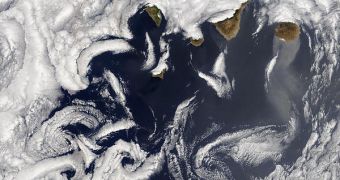A new series of discoveries is forcing investigators to reconsider established theories about how the world's oceans function. Recently, experts learned that the deep sea, long thought to be a world onto itself, in fact responds to changes that occur in the waters closest to the surface.
The data indicate that the two levels of the ocean are in fact more connected than past studies led us to believe. The finding is also important for understanding the cycle of nutrients and microorganisms through the sea. These processes are important for a large number of reasons.
Furthermore, the work demonstrates that even the atmosphere may extend its effects deep under the surface of the sea. It does so by generating swirling currents called eddies, which in turn influence the deep waters below their location.
The latter are then made to move for hundreds of miles, and made to transport chemicals, marine creatures and heated or cold waters to other areas. This contributes to mixing the oceanic waters, and conceivably triggers the emergence of new species of aquatic animals.
The investigation that came to this conclusion was carried out by experts at the Woods Hole Oceanographic Institution (WHOI), in Massachusetts. Experts here were led by biologist Diane K. Adams, who was also the author of the scientific paper detailing the findings.
The work appears in the April 29 issue of the esteemed journal Science. “What's going on in the atmosphere can actually affect what is going on deep in the ocean, even though it's buffered [in the case of this study] by a mile-and-a-half of water,” Adams explains, quoted by LiveScience.
She adds that eddies, the currents that are widely believed to be responsible for this type of mixing, span for hundreds of miles at times, as viewed from satellites. But, until now, experts have always believed that their influence never extended below the shallow waters right beneath the surface.
Investigators came to this conclusion after they noticed that organisms which live exclusively around deep-sea hydrothermal vents popped up at locations hundreds of miles away, where no such vents were active.
“This could be the mechanism driving the long-distance transport of chemistry and biology that we were seeing,” Adams explains, adding that the international scientific community really needed this study.
“The larvae are produced at vents and generally stay near vents. But when eddies go by, they appear to send all the stuff that was in the vents into the ocean and potentially to another vent site,” she concludes.

 14 DAY TRIAL //
14 DAY TRIAL //